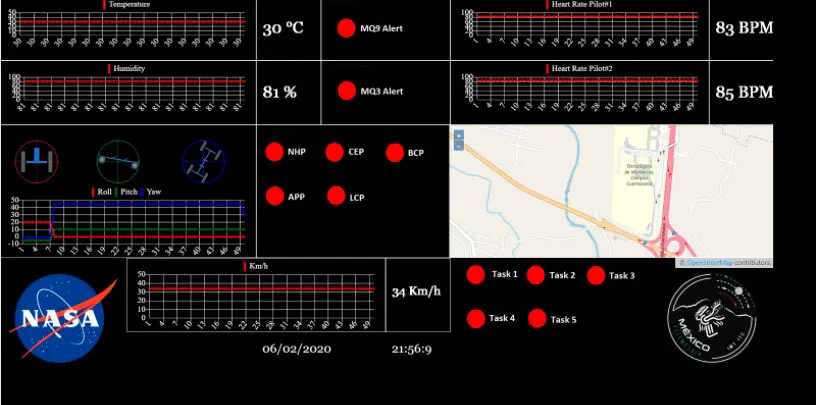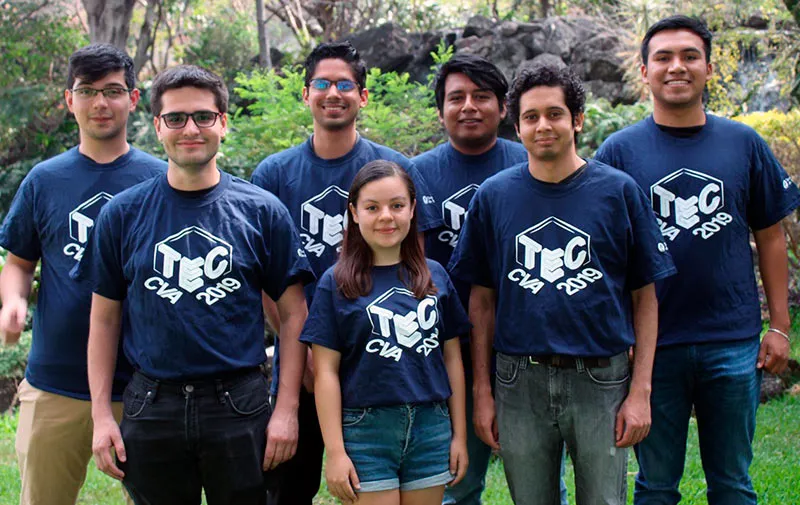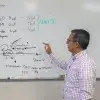Students from the School of Engineering at the Tec’s Cuernavaca campus have obtained the AIAA Telemetry/Electronics Award for the third year in the 2020 NASA Human Exploration Rover Challenge.
This year, the event was held virtually owing to the cancellation of on-site activities at NASA’s Marshall Space Flight Center in Huntsville, Alabama, due to the COVID-19 pandemic.
The telemetry category is presented by the American Institute of Aeronautics and Astronautics and seeks the best implementation of a remote measurement system that allows the variables of vehicle, pilots, and terrain to be monitored.
The telemetry team consists of students from the degree courses of Mechatronic and Computer Technology Engineering: Diego Hernández, Brenda Zárate, Aarón Pérez, Eric Arzate, Brian Gálvez, Erick Olivar, and Erick Velázquez.
They were mentored by teachers from the school of Engineering: Dr. Ricardo Fernández, Dr. Julián Guerrero, and Dr. Jesús Simental.
THE CHALLENGE
The NASA Human Exploration Rover Challenge is one of the seven Artemis Student Challenges organized by this space agency, which seek to prepare new generations of scientists and engineers for future colonization of the Moon and Mars.
The challenge in which the Cuernavaca campus took part is the only one open to international teams. Over 8 years, it has positioned itself as one of the best foreign teams in this challenge.
“Telemetry provides the rover’s five senses. It allows us to see, feel, and hear what’s happening remotely on the mission and gives us the power to control and analyze the data captured,” explains Brenda Zárate, the student in charge of audio and video.
“Our system is capable of measuring the rover’s position (GPS), speed, vibrations, bending, temperature, and humidity, in order to look after the pilots’ safety and keep a record of tasks completed,” explains David García, project mentor and academic advisor on engineering.
The competition aims to challenge students from across the world to design and manufacture a vehicle (rover) that simulates transportation on future missions to other planets, asteroids, and moons.
The rover must be capable of traveling along a course with obstacles under adverse conditions and on which the pilots can perform missions to collect samples, as part of the extraterrestrial exploration.

This year, due to the COVID-19 pandemic, the teams only took part by sending reports on the design and manufacture of the rover, as well as their use of technology in wheels and telemetry.
“The report on telemetry work is a requirement to be able to take part in the competition,” says Brenda.
“It includes 10 sections, among which are the system design, the electronics part, the graphical interface, remote data transmission.
“And our favorite (which we think helped us to win): innovation, which included NASA protocols, safety protocols, and a pilot monitoring system.”

“Thanks to telemetry, we can remotely tell what the pilots are experiencing, as well as assist the team at each stage of the tasks required with data that can benefit or affect the exploration goal of the mission,” says Brenda.
111 teams took part from universities and high schools in different countries such as the United States, Germany, Peru, Colombia, Italy, Russia, Puerto Rico, Brazil, and Mexico.
Participation of Cuernavaca in the NASA Rover Challenge
The participation of Cuernavaca campus has become an uninterrupted tradition since 2013, with mentoring from laboratory technicians and coordinated by the campus’ Undergraduate Mechatronic Engineering Department.
Over 8 years, they have obtained the following awards:
- AIAA Telemetry/Electronics Award (2014, 2016, and 2020)
- “Jesco von Puttkamer International Team Award“ (2016, 2017, and 2019)
- “Frank Joe Sexton Memorial Pit Crew Award” (2017)
- “Team Spirit Award“ (2018)
YOU’LL SURELY WANT TO READ:





